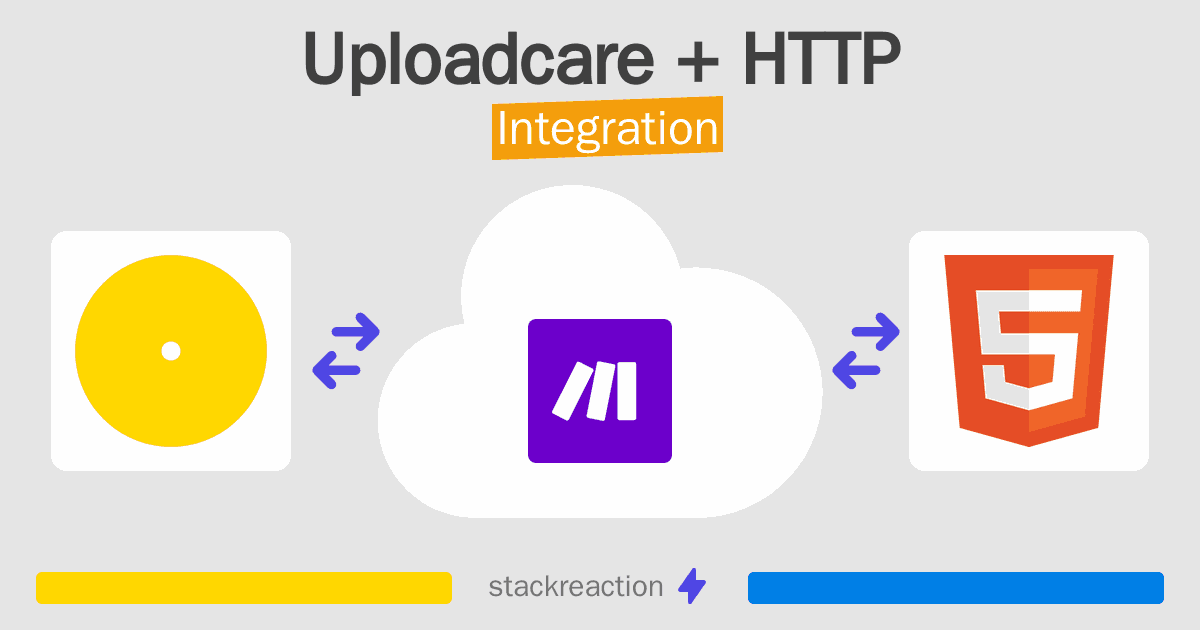How to connect Uploadcare and HTTP
Uploadcare and HTTP integration is available through Make.com, a workflow automation tool. With the combination of 6 Uploadcare triggers and 7 HTTP actions, you can create dozens of integration workflows to automate your work.
Workflow Automation Platforms supported by Uploadcare and HTTP
Want to automate the exchange of data between Uploadcare and HTTP without the hassle of coding? These workflow automation platforms make it possible. Explore this list to find the best fit for your business.
- Make.com. Make.com (Integromat) is a powerful automation tool that enables users to connect their favorite apps, services, and devices without any coding skills. With its unique features, users can automate even complex integrations easily and efficiently, saving time and effort. Integromat allows to connect apps and automate processes in a few clicks.
- Pricing Options
- FreemiumFree Trial
- Starting From
- 10$/month
Uploadcare and HTTP Integration Price
When it comes to optimizing your workflow and streamlining tasks, integrating Uploadcare and HTTP can be seamlessly achieved using no-code or low-code automation tools. However, it is crucial to understand the pricing aspects.
We have gathered and organized pricing information for automation services that support Uploadcare and HTTP integration. Refer to the table below for details on pricing based on 100, 1K, 10K and 100K basic automations per month.
Basic automations encompass only one trigger and one action. Creating a task after someone fills out a form is a classic example of this.
| Automation Platform | 100 | 1K | 10K | 100K |
|---|---|---|---|---|
Volume: 100 Plan: Free $0 Volume: 1K Plan: Core $10.59 Volume: 10K Plan: Core $18.82 Volume: 100K Plan: Core $214.31 | $0 Free | $10.59 Core | $18.82 Core | $214.31 Core |
Triggers and Actions supported by Uploadcare and HTTP
Integrating Uploadcare and HTTP often involves finding automation that is suitable for your business request.
Automations serve as a workflows that connect your applications, automating a business process. The Trigger acts as the event that initiates the automation, while the Action denotes the executed event.
We have gathered all available Triggers and Actions from diverse Workflow Automation Platforms so that you can evaluate integration possibilities and make an informed decision on integrating Uploadcare with HTTP.
When this happens
Select a Trigger
Do this
Select an Action
How to setup Uploadcare and HTTP integration
Step 1: Choose a Workflow Automation Service that supports the integration of Uploadcare with HTTP. Choose automation platform
60 seconds
60 secondsStep 2: Authenticate Uploadcare and HTTP on the chosen automation service.
60 seconds
60 secondsStep 3: Choose a Trigger for Uploadcare, which will start your automation scenario. Explore Triggers
15 seconds
15 secondsStep 4: Choose an appropriate Action to be executed by HTTP once your automation scenario is triggered. Explore Actions
15 seconds
15 secondsStep 5: Configure the data that is exchanged between Uploadcare and HTTP.
120 seconds
120 secondsStep 6: Complete your integration by testing and publishing it. You're all set!
Popular Automation Scenarios with Uploadcare and HTTP
By automating your complete business processes, you can enhance efficiency and reduce errors. With Uploadcare and HTTP, there are several popular approaches users can take to automate their tasks.
More integrations to Uploadcare
If you're looking for new ways to automate tasks with Uploadcare, check out our list of other popular integrations. Uploadcare Integrations
More integrations to HTTP
Explore the list of other popular HTTP integrations. HTTP Integrations
Uploadcare and HTTP integration Diagram

Frequently Asked Questions
Does Uploadcare integrate with HTTP?
- You can connect Uploadcare and HTTP automatically using no-code Workflow Automation Tool. Use Make.com to link Uploadcare and HTTP.
Can you Integrate Uploadcare and HTTP for free?
- Yes, you can use the free plan of Make.com to connect Uploadcare to HTTP for free, albeit with some limitations.

